V4CO is more devilish proof that in Eurorack, anything is possible – even the improbable, unruly, and joyfully unwise. More than just an oscillator, it’s a demented, destructive voice combining 8-bit wavetables, sub-bass, overdrive, and VCAs, adding patchable circuit-bending mayhem with the GLITHc expander.

8-bit wavetable source
Okay, let’s first contend with the (distorted, 8-bit) elephant in the room – the V4CO is really big, and it’s not inexpensive. (I would buy the bundle with the GLITHc breakout, not the oscillator alone; more on that later.) It’s a maximalist sound laboratory as much as it is just an oscillator module. The boutique design comes from an artistic collective moonlighting on horror films when not focusing on climate protection and reforestation in rural Portugal; a portion of every purchase goes to planting trees. The modules were conceived by Ingmar Koch / Liquid Sky, with engineering and design by Matthias Beese and Thilo Goldschmitz.
These modules are uniquely tough to classify, and there’s more value there than you might gather at first glance. While the V4CO is labeled as an oscillator, it combines multiple oscillators, VCAs, and overdrive/shaper. The GLITHc is multifunctional, too, providing not just breakout options but the ability to “bend” and modify the V4CO just by patching and adding mults, logic operators, and even a MIDI interface. Put the two together, and you have the basis of a (very aggressive) complete system. This is still a niche instrument; if you want a general-purpose dual wavetable oscillator, you can get something like a Piston Honda. But this is also not a typical dual-wavetable oscillator.
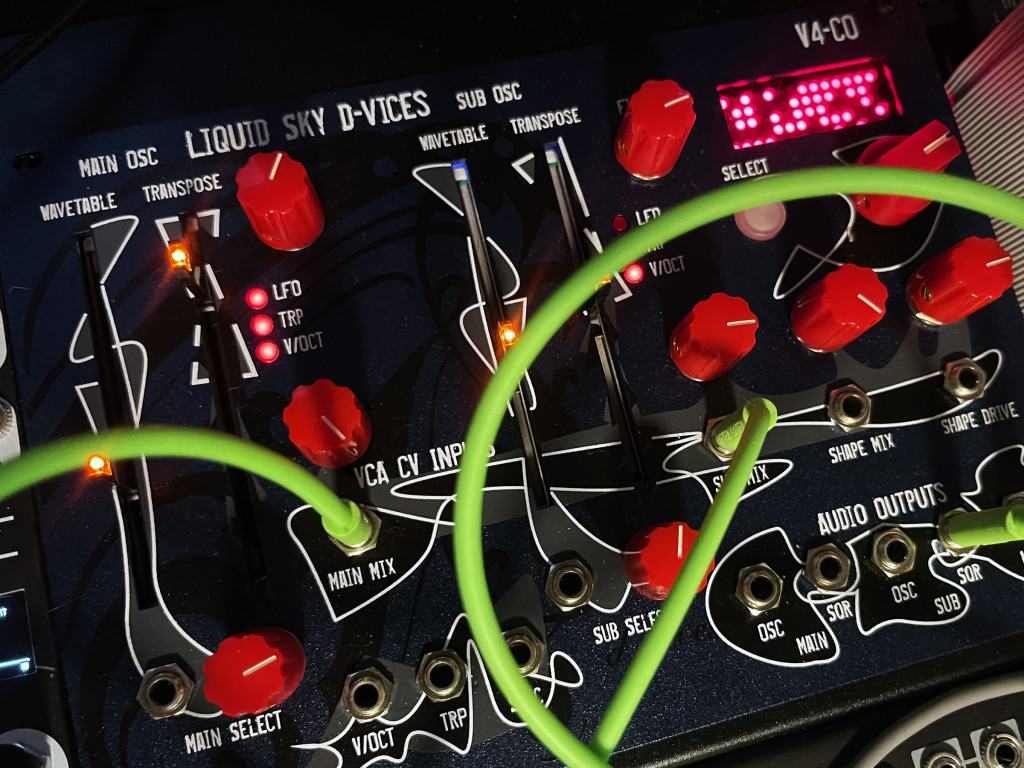
First, the main V4CO has dual 8-bit wavetable sources, each with its own distinct set of wavetables, four analog VCAs (for internal use only since they lack inputs), and an internal waveshaper. That combination is very, very aggressive, even before you start bit-flipping wavetables using the GLITHc. Liquid Sky also brags that they use a true 8-bit processor (an Atmel) and dual 8-bit output – not just 8-bit wavetables played through a 16-bit DAC. You can’t hear the processor, obviously, but DAC – VCA – shaper does matter a lot – since even though the wavetable is digital, there are nuances even to the analog hardware outputs o the DAC. This particular concept is familiar to us from the MeeBlip – original/SE/anode/triode/geode all use a similar setup with similarly grimy results. And the 8-bit wavetables themselves are a big part of the character here – a legacy of vintage classics like Ensoniq’s ESQ1 and SQ88. You also get a full 8-octave range, which can be quantized to chromatic, or left freely-tuned.
Now, using 8-bit wavetables and modulation and analog VCAs with shaping overdrive is a configuration that can gnaw your legs off, if you want. The V4CO is rottweiler-, pit bull-, space alien-angry, especially as you begin patching in modulation and GLITch.
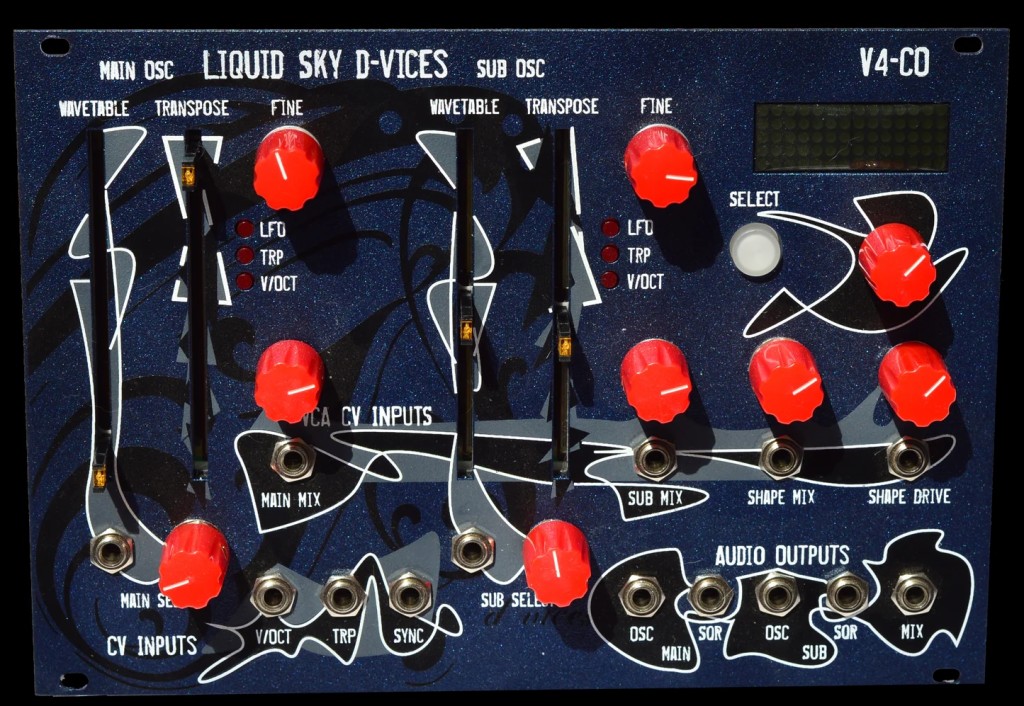
The wavetables are configured by default in 16 banks of 16 wavetables for each of the two oscillators. The defaults are lined up for smooth transitions, but by setting a jumper on one or both of the two oscillators, you can swap over a selection of Adventure Kid 8-bit wavetables. (Those are public domain, but here were used with permission. Whether or not you’re picking up a V4CO, you can grab those for free – with a donation recommended.) Also, in a nice touch, each V4CO unit shipped comes with a different selection of Adventure Kid wavetables – so your module is different from everyone else’s.
The V4CO is rottweiler-, pit bull-, space alien-angry.
Liquid Sky is quick to say that the V4CO isn’t a drone synth, but it’s hard not to skip internal/external VCA and just drone while manipulating the wavetables and shaper. That is, your first play is very likely to sound (and feel) like Dr. Walker’s go at it here:
Here’s a sense of just the oscillators running with overdrive (and no further processing):
This is about hard-edged, grungy 8-bit waveforms. The wavetables are just 16 voltage steps long, so you’re able to work at the per-step, per-bit level (especially once you add GLITHc). You also get smooth, long-throw faders for transposition and wavetable for direct manual manipulation. (You could also chain banks and waves together for a total of 256 steps.)
CV in and out
Input CV includes ins for adjusting wavetable position (with attenuation, so you can dial in particular areas of the wavetable) and inputs for each of the VCAs (sub, mix, and shape mix and shape drive). There’s just a v/oct input (0-8V) and an upward transposition input (0-5V) plus a sync input trigger. There’s no FM input; you’re limited to just upward transposition. But you can patch directly into v/oct, and amplitude modulation is possible with the VCAs. Attenuators on the wavetable in are there for a reason: with 16 steps, even small wavetable changes can become significant, so it helps to be able to dial in just what you want. (That’s even more true if you flip to the non-default tables.)
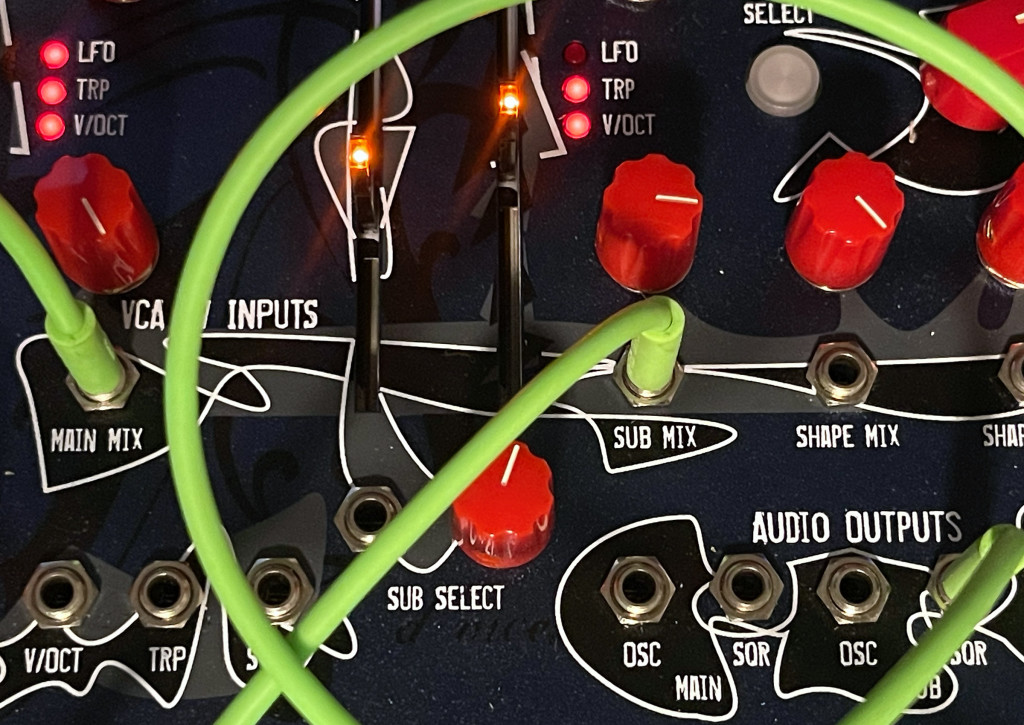
V/oct can be disabled per oscillator, giving you additional granularity in controlling everything. The SYNC input resets the active wavetable to its original position so you can retrigger wavetables.
The results are often unpredictable, but that’s the point. The menu encoder even doubles as a “randomize wavetable” feature, and you’ll find you do that a lot – just to see what the same parameters will sound like with a different wavetable.
The patchability of the V4CO shines with its additional configurable outputs. The main oscillator and sub-oscillator each have their own dedicated outputs, plus separate pure-square outputs for each on top of the mix output. (Mix comes after drive, so you only get the waveshaper with the mix output – which also means you get some additional layering possibilities with the pre-shaper outputs.) That’s already a lot of flexibility, but then you can reconfigure each of those outputs as LFOs in either slow or “super slow” modes. And they mean super slow – you can set one cycle as long as 20 minutes(!)
Having the configurable LFOs means your V4CO doubles as a complex waveform modulation source.
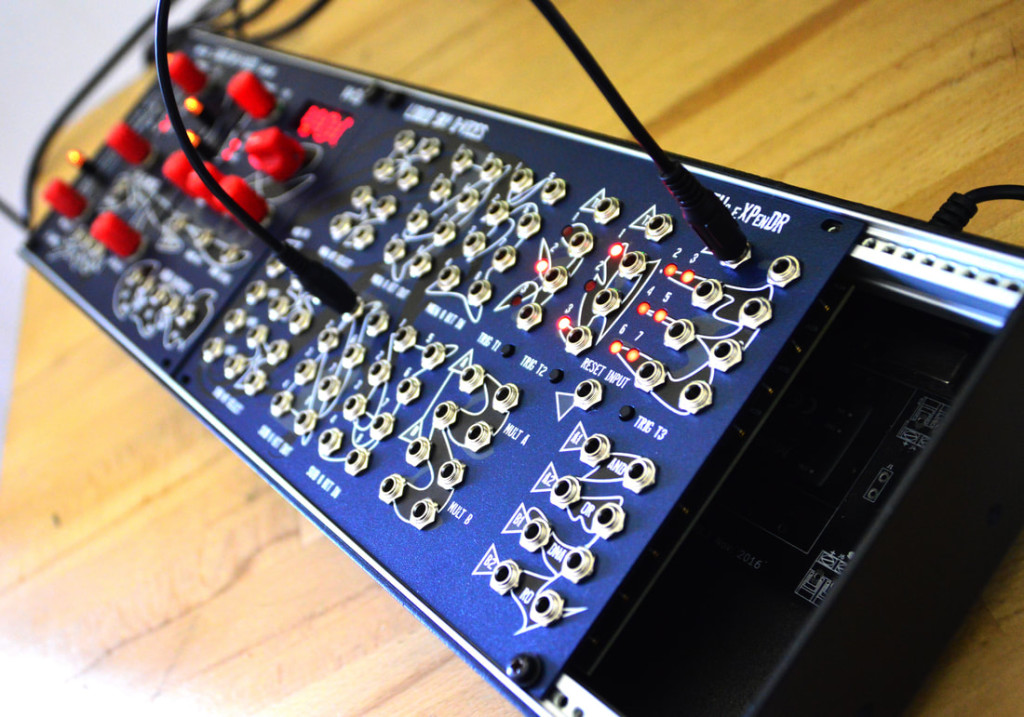
Bend, bitflip, glitch: the expander
If you were to just look at V4CO, honestly, you have a big, slightly odd dual-wavetable oscillator module. It has a nice I/O complement, but there are some other feature-packed wavetable modules out there as competition. It’s really in concert with GLITHc that V4CO starts making sense (or deliciously stops making sense, depending on how you look at it).
GLITHc “eXPenDR” is a utility module, an interface, a way of selecting wavetables, and a sequenced modulation source. Most appealingly, it’s capable of essentially circuit bending with patch cables, by allowing direct bit manipulation and rerouting of the oscillator’s signal flow.
Here’s Thilo explaining how it works:
You can route signal from point to point, messing around with waveforms and wavetables, and drive those inputs via the mult, logic operator, and even internal sequencer. That gives you all kinds of weird and sometimes (as the names implies) glitchy modifications of the waveform. The result is unlike anything else, apart from going onstage with a breadboard or something: you’re bending and hacking the waveforms, and sequencing those bends and hacks, all with patch cords.
Let’s walk through it one section at a time.
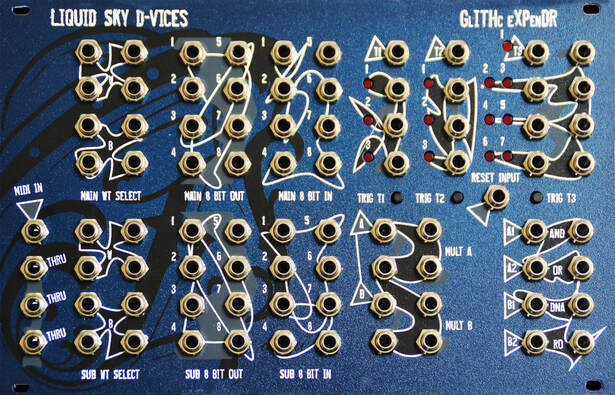
The result is unlike anything else: you’re bending and hacking the waveforms, and sequencing those bends and hacks, all with patch cords.
Wavetable manipulation. You can patch your way through wavetable selection for each of the two wavetables (main and sub). These are bitwise selections, so you set the bank with the four bottom patch points for each, and the waveform via the top four patch points. As pictured, these go, from top left counterclockwise, 1, 2, 3, and 4.

Now, will you remember any of that, or will you try randomly patching and see what sounds good? I’ll… let you decide.

Waveform manipulation. Okay, selecting wavetables is fine and fun, though you could also do that via CV. But where this really starts to get deep is working on a bit level with the waveforms themselves – basically, you get a patchable bit-flipper right on the module. Route outs into ins and you remap bits in the wavetable itself. It’s bit-flipping nuts – and you can genuinely discover rich timbres intuitively this way.
Let’s just say it: the wave out/in bit-flipping is the feature that makes this whole rig irresistible. And you aren’t just limited to patching this manually, because of the next section:

Mini sequencer, mults, logic gates. The right half of the GLITHc is devoted to additional functionality. There are three mini sequencers, each with a clock input and three gate outputs. Each has a different behavior: sequencer 1 steps between outs in a ping-pong order, sequencer 2 operators as a clock divider (fixed at divisions of 16, 8, and 2), and sequencer 3 has its own irregular order. (It counts 1, 2, 3, 4, 5, 6, 3, 7, for some reason.)
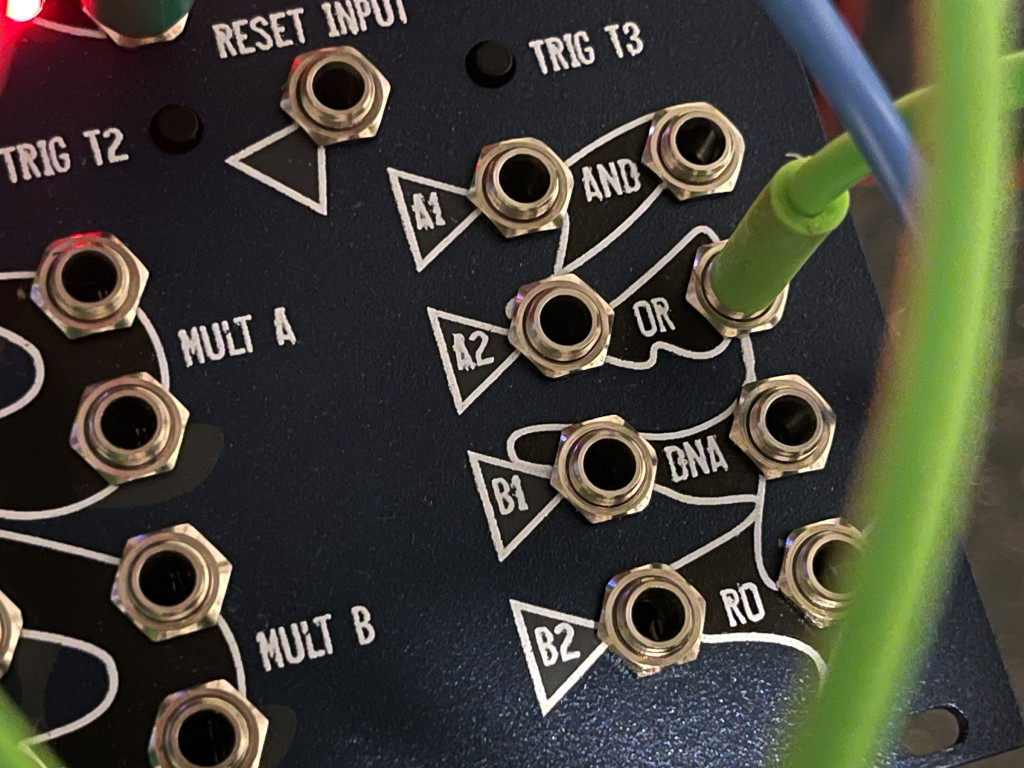
Two pairs of logic gates add to the creative signal manipulation. The first compares two inputs and outputs both AND and OR. The second is the inverse; it takes two inputs and outputs NAND and NOR.
Because the bit outputs from the waveform also double as a clock, you can run the sequencer by patching from the waveform to the clock in on each sequencer. Or you can patch an external signal if you prefer, meaning you can also sync this to a tempo.
This all makes loads of sense in combination with the wavetable controls on the V4CO. But this is a modular rig, so you can also patch in and out of other modules. You can make extra use of all those dedicated signal outputs on the V4CO, too.
And to facilitate patching, there are even some built-in multiples. (You can use this section as 1 in x 6 mult, or two separate 1 x 3 mults.)
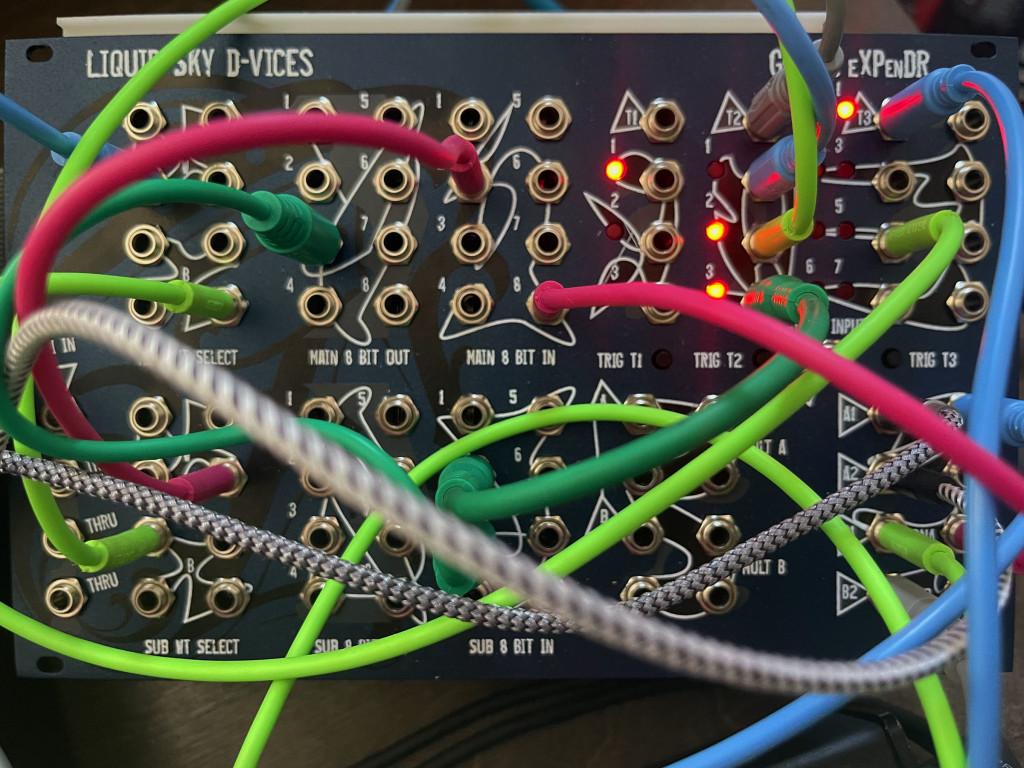
MIDI. There’s also a full MIDI implementation accessible via minijack MIDI-TRS-A input, with three THRU jacks – so GLITHc doubles as a simple MID thru box. (The MIDI-to-V4CO interface is exclusive to the module, but you can patch other minijack MIDI signals through the THRU.) You can use MIDI to switch waves and banks (even sequencing banks), switch modes for oscillator/LFO outs, transpose, and v/oct, plus use MIDI notes, pitch bend, and vibrato.
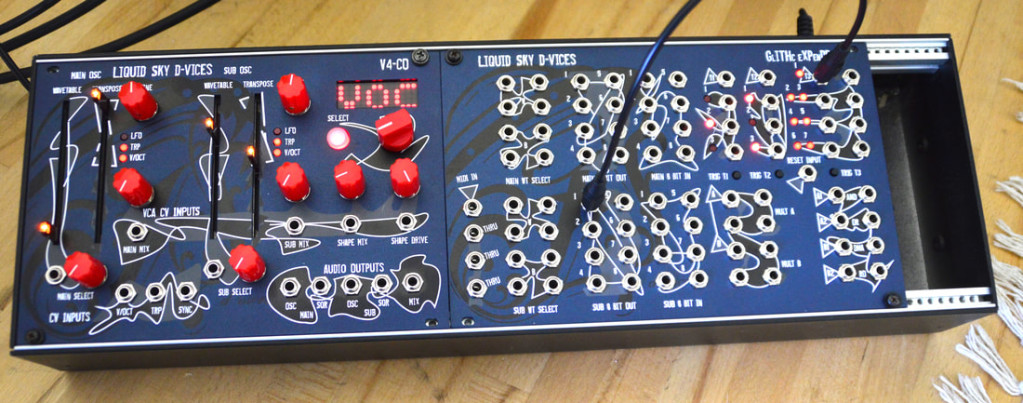
Putting it together
The V4CO / GLITHc combination is a brain-melting beast for experimental sounds and techno. There’s more sound in the one V4CO module than some entire two-row Eurorack rigs. I don’t mind the size so much, as this feels like a studio machine – a deep well of weird and wonderful wavetable concoctions.
Here’s a quick demo/jam, just to show how much variety you can get just by manipulating patch cables and wavetable position, using some external clock and modulation (Xaoc Batumi II, Dnipro Krait) in addition to the internal stuff (though not much additional). I kept the lab/hack vibe going by stowing the expander in a 3D-printed stand, while other skiffs were busy with some … other modules I’m testing now. (Hey, if someone wants to send me a skiff for review, I won’t stop you. But this seemed to fit a nice Reaver vibe, so there.)
There’s some very light mastering/reverb on this, just as I felt realistically I’d add some treatment after – and the other videos here are raw.
And as a studio tool, this is a versatile techno powerhouse, too. Here I am playing with some layers for a collaborative project with Florian Meindl, using still more modulation via GLITHc, which opens up lots of other possibilities. In both, I’m using Intellijel’s 1U LPG – any LPG is a great combination with the V4CO. (I wish they made a slightly expanded, actively powered version of that 1U LPG, or that someone did, actually! The V4CO is actually the first oscillator I’ve had that gives a hot enough signal not to mind the passive thing.)
Late night, noir mode:
I expect I’ll be filming more soon; it’s so easy to get lost in this thing, and I found I was often making quick samples in Live as I worked (with Live as a quick sequencer via the After Later Threads.)
All in all, I’m really won over by this combination. It makes perfect sense in the modular context, but it’s equally open-ended internally with the pair. It really feels like about two-thirds of a complete system – which then justifies the price and HP, if this is in your budget.
The fact that there are many ways to play and re-patch make it for me. There are some wonderful experimental synths out there that … just have a tendency to sound recognizable. This is an open-ended palette for experimental and techno sounds that can sound alien every time.
But even if this is out of budget, you have to admire that this exists – and it’ll surely inspire some mucking about with wavetables if you weren’t there already. That is, if you aren’t already of our bitflip/8-bit/mangling faith, you might just be converted.
This is an open-ended palette for experimental and techno sounds that can sound alien every time.
More music and sound examples
This one has a real range. Let’s listen.
Dj T.A.G. (Tresor/Tresor Records) has this nice techno example:
And made some drones, too:
NOISEBUG made a demo video with various patches:
Bonedo made a demo showing this doesn’t only have to be dissonant, distorted sounds, but can also produce melodic patterns, subtle and metallic timbres, and morph through various colors. It’s an excellent range:
More:
https://www.liquidskyartistcollective.com/liquid-sky-d-vices
Liquid Sky d-vices V4CO & GLITHc
Liquid Sky d-vices – V4CO @ noisebug
And with a system in mind, Noisebug is also carrying a complete system with a powered Doepfer case and Synthetic Sound Labs Modulation Orgy in addition to the original: